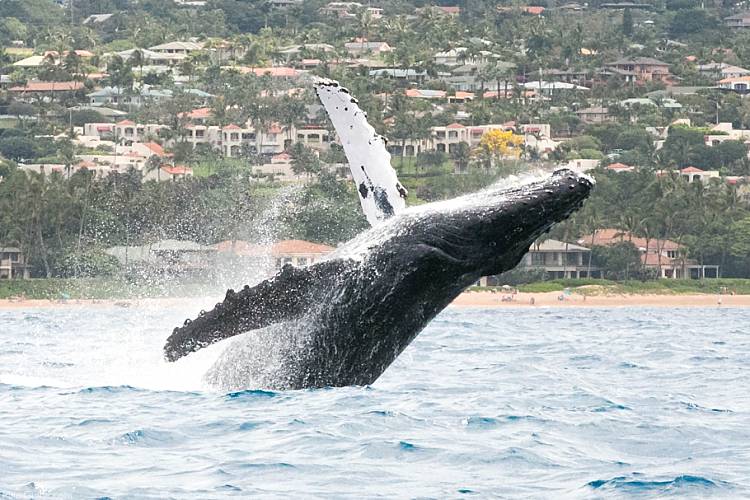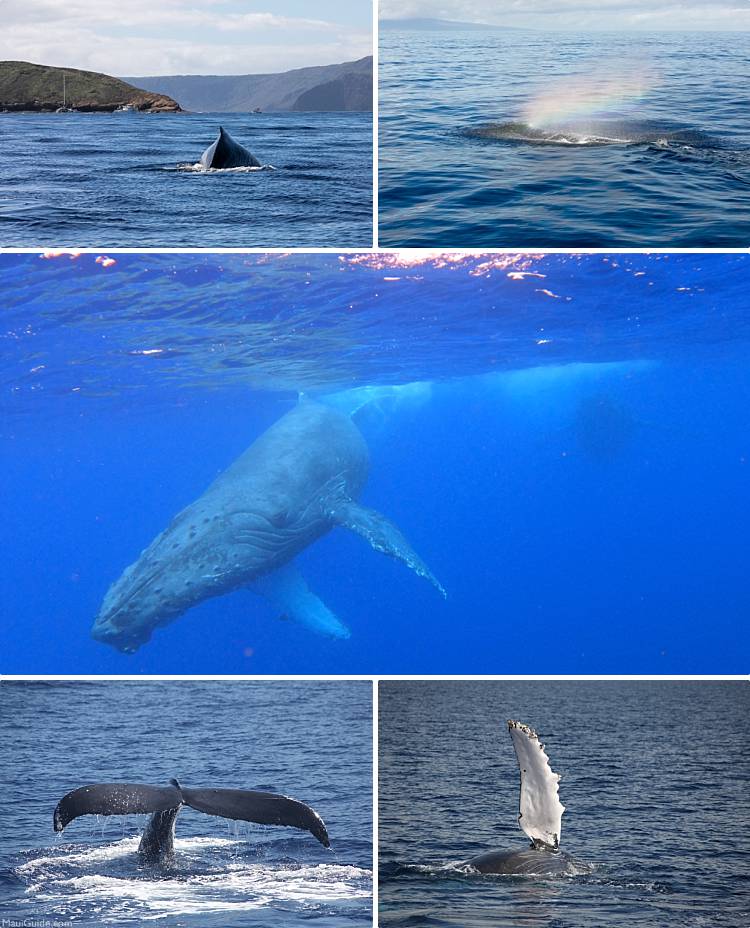These gentle giants spend their Hawaiian winter vacation turning tricks for anyone in a 50 mile radius. They also take advantage of our relatively predator-free warm waters to give birth. Once all this has been accomplished, the humpback whales leave Hawaii on a 3,000+ mile journey that will take them back to the chilly waters of Alaska.
Whale watching is such a unique opportunity, and most visitors hate to miss the watching window! If you’re someone who wants to see a whale do a backflip in person, then here’s your (almost) sure-fire guide to catching a Kodak moment with a humpback.

When Humpbacks Arrive in Hawaii
These gentle creatures technically make their first debut around October or November, but they slowly arrive at different times, and you’d be one of the lucky few to catch a glimpse of a whale at this time. These majestic giants, known for their acrobatic breaches and complex songs, travel over 3,000 miles to the Hawaiian islands, which serve as their breeding and calving grounds. During their stay, the whales engage in courtship, give birth, and nurture their young, making the Hawaiian waters a vital nursery for the next generation of humpbacks. Something, people
Peak Hawaii Whale Season
By February, the majority have made the voyage to these balmy waters and are ready to put on a show. You’d be hard-pressed not to see at least a few, even if you’re only experiencing them through binoculars. This is also the best time to take a Maui whale watch. Prime-time whale season is so busy that you will most likely see whales on your way to the whale watch. The weather is great in February and March, too, making it a great time to be on the island. Check out this epic whale watch moment we captured off of Maui’s West Side.
And they begin to depart…
As the whale season in Hawaii draws to a close, typically from April to early May, the humpback whales begin their long journey back to the nutrient-rich feeding grounds of Alaska. This migration marks the end of a critical period in the whales’ lifecycle, where they have successfully mated, given birth, and nurtured their calves in the warm, safe Hawaiian waters. The departure of the whales signals a transition in the marine environment, with the bustling activity of whale watchers and researchers slowing down until the next season. This cyclical migration underscores the resilience and adaptability of humpback whales as they traverse thousands of miles each year, continuing a pattern that has endured for generations.


Looking for things to do in Maui, but you find yourself overwhelmed?
Check out Simple Maui Activities.

World Traveler, Digital Nomad, Small Business Enthusiast, and Lover of words! Originally from Austin, Texas, I’ve lived on Maui for many years. Currently in Los Angeles.

Leave a Reply